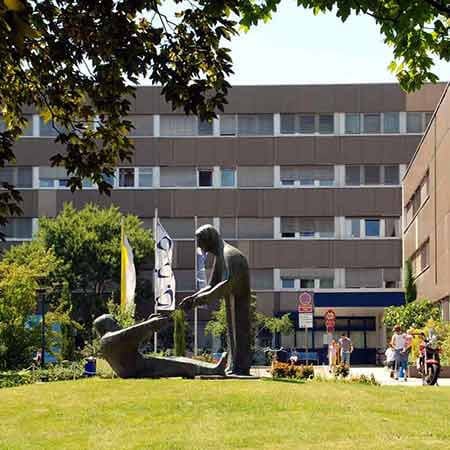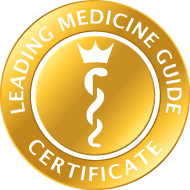About the disease
Diaphragm rupture is the condition whereby the diaphragm is torn. Diaphragm is located across the ribcage. It is responsible for proper breathing and assisting the lungs. It consists of skeletal muscles that separate thoracic and abdominal cavities. The most common cause of diaphragm rupture is trauma or injury. Two kind of traumas that can lead to diaphragm rupture are blunt and penetrating. Blunt trauma can occur as a result of severe fall, whereby penetrating trauma can occur as a result of deep diaphragm contact with an outside object, such as a gunshot or stabbing. According to statistics, diaphragm rupture develops in 5% of blunt traumas to the chest.
The severity of diaphragm rupture depends whether or not this rupture affected other organs, located close to the diaphragm. In many cases the abdominal organs can become herniated into the chest area. It happens because the pressure in the abdominal hernia is higher in the abdominal area. As a result, if diaphragm ruptures, abdominal organs can go up because of the support that diagram normally provides. It can lead to severe complications, such as breathing problems or abnormal blood supply. In severe cases, the blood supply can become completely cut off because of severe herniation of inner organs and then diaphragm rupture can be a fatal condition. In rare cases sepsis can also develop. Sepsis is the response of body to the infection, which can occur if some abdominal organs become blocked. According to statistics, more than 60% of all cases of rupture develop on the left side. It may be explained that liver, located on the right, provides some cushioning for diaphragm. Very often if the diaphragm rupture happened on the right side, the liver is affected as well.
Symptoms
- Chest pain
- Abdominal pain may be present as well
- Breath sounds are diminished in some cases
- Pain intensifies with moving or inhaling
- Difficulty breathing
- Inability to take deep breaths
- Coughing
- Fever in case of an infection
Diagnosis
- During a general examination the doctor will listen to the lungs and will gently palpate the chest and abdominal area to determine the exact location of pain.
- The doctor can also feel in some cases the herniation of internal organs.
- The doctor will inquire about the injury which caused the symptoms. Knowing the exact kind of injury or trauma that the patient has can facilitate the diagnosis and make it faster.
- The diagnosis may be difficult to conclude if the person has other injuries that could be causing the same symptoms.
- Imaging tests, such as an X-ray and CT scan, are needed to determine if the diaphragm is ruptured, the exact location of rupture and also its extent. Imaging tests can also show if there is strangulation of internal organs or problems with blood supply. CT scan is usually considered to be most precise imaging test, because X-ray sometimes shows false results and is not always accurate enough.
Treatment
- Plastic operation or laparotomy are needed to repair the diaphragm rupture and also stabilize the internal organs, if they strangulated because of the rupture.
- Most commonly, diaphragm rupture can be treated if the patient is operated on time. It is other injuries which can be present as a result of severe trauma that can be dangerous. It is important to examine the whole body and all organs to make sure they function normally.
- After surgery the patient may need to have some respiratory support until the diaphragm heals.
Authors: Dr. Nadezhda Ivanisova, Dr. Sergey Pashchenko


















